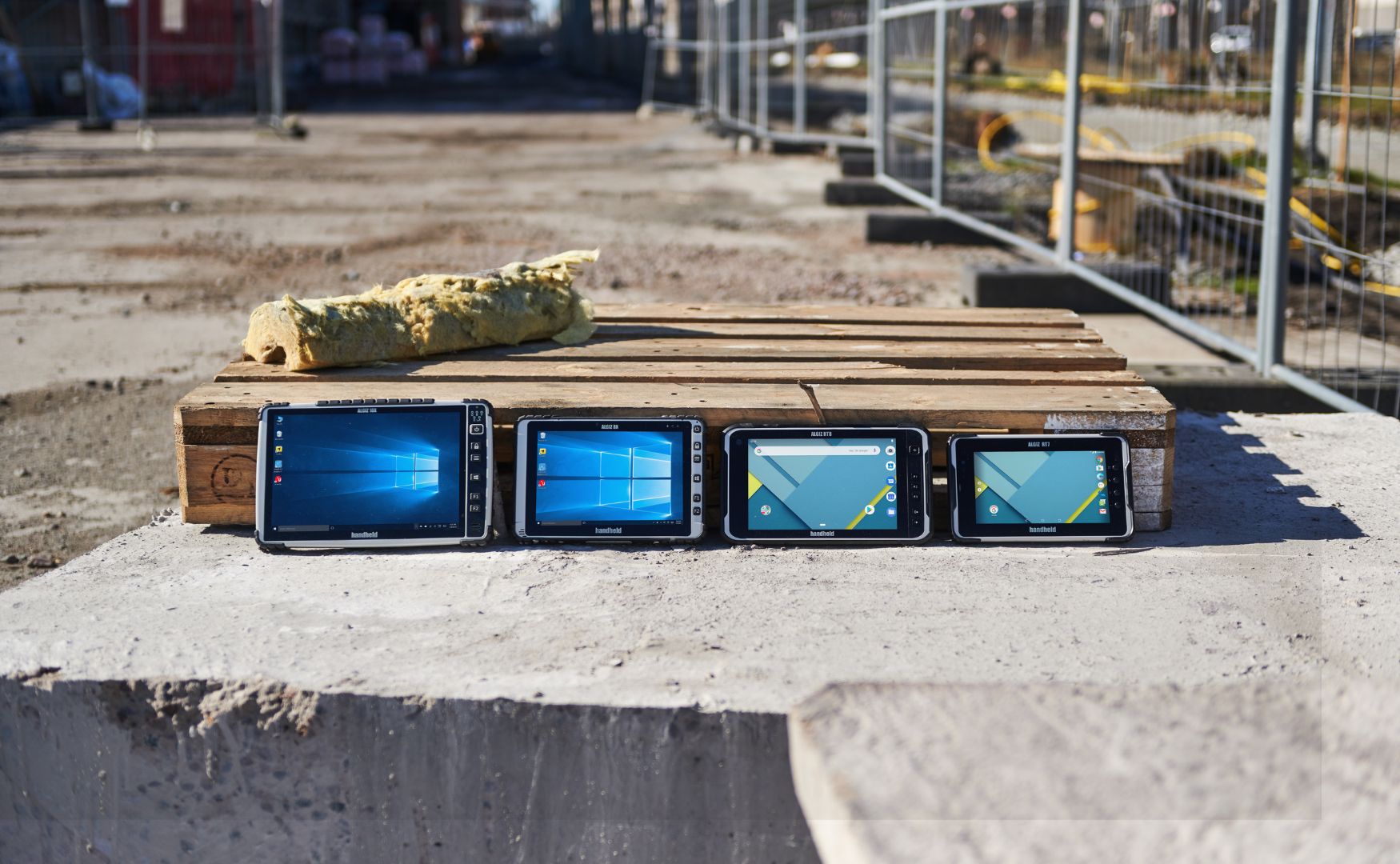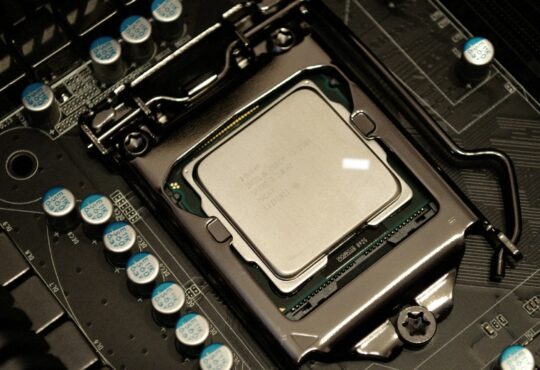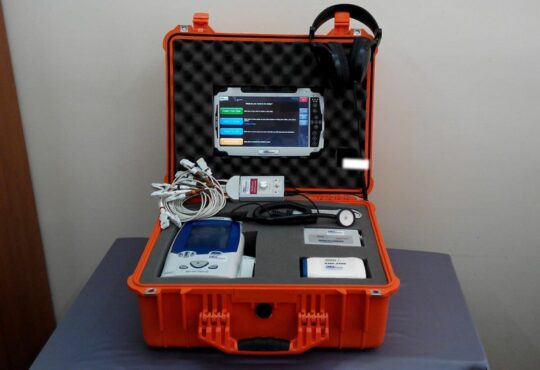Purchasing new gadgets is always going to be a bit of a daunting task, take one look at the specifications and you will be drowning in numbers. Choosing a device for professional use is going to make the choice even more important, specifications aren’t mere numbers; they dictate efficiency and reliability. At the same time, there is no point in overspending on too much performance. Follow along as we dive into rugged tablet specs for professional use.
Tablet specs explained
1. Display Size
Units: Inches
We all know that display size is measured in inches and it’s always clearly marked out and used as a sales point. But exactly how big is a 10-inch tablet? For starters, it’s measured diagonally – so from the bottom-left corner to the top-right corner, and if you’re used to the metric system 10 inches is 25,4 cm.
The width and height that translates to is going to depend on the aspect ratio of the screen, most tablets will be using a 16:9 or 16:10 ratio. With a 10-inch display and 16:10 ratio, you will get a display that is 8,7” (22,1 cm) x 4,9” (12,5 cm). If you want to figure out the dimensions of a specific tablet there is a calculator you can play around with here.
A good number: A 10-inch tablet is a versatile choice, offering a fairly big screen that allows side-by-side apps without sacrificing mobility.
2. Display Resolution
Units: Pixels
Resolution defines the clarity of every image, document, or video. A higher resolution means more pixels packed into every inch, offering detailed visuals. This clarity is vital for professionals who cannot afford misinterpretations due to pixelated or blurred images.
A good number: 1920×1080 or 1920×1200 pixels (Full HD) are universal benchmarks, balancing clarity with power consumption.
3. Screen Brightness
Units: Nits
In outdoor environments or well-lit indoor spaces, a screen’s brightness can make or break its usability. High brightness ensures content remains visible even under direct sunlight. Equally, in low-light or nighttime scenarios, adjustability to lower brightness levels is crucial to prevent eye strain.
A good number: Tablets designed for outdoor utility often gravitate towards 500 nits or more for optimum visibility.
4. Processor (CPU)
Units: Gigahertz (GHz) and number of cores.
The processor, the brain of the tablet, determines its speed and performance. More cores signify the ability to handle multiple tasks simultaneously, while a higher GHz indicates faster individual core performance.
A good number: Quad-core processors, operating around the 2 GHz mark for normal jobs and 2,5 GHz, set the performance standard for demanding tasks.
5. RAM (Random Access Memory)
Units: Gigabytes (GB).
RAM serves as the temporary storage for running apps. A greater RAM volume can hold more active applications simultaneously, ensuring smooth transitions between tasks and efficient multitasking. For professionals, this can mean the difference between fluid operations and frustrating lags.
A good number: For multitasking professionals, 6GB is a starting point, though 8GB offers a more fluid experience for demanding tasks.
6. Storage
Units: Gigabytes (GB) or Terabytes (TB).
Beyond capacity, storage type (like SSD vs. HDD) influences speed. Quick storage allows faster access to files, apps, and data—a critical feature for professionals who can’t afford to wait. 1 TB equals 1000 GB and storage can be increased by using a micro SD card.
A good number: 128GB SSD storage is a norm, but for vast datasets, professionals might opt for 256GB or even 512GB variants.
7. Battery Life
Units: Hours or milliampere-hours (mAh).
This determines how long your tablet will run on a single charge. While mAh can give an indication, actual performance depends on usage, screen brightness, and other factors. With a bigger screen, you want a bigger battery.
A good number: A 10 – 12-hour operational window is a benchmark.
8. Cameras
Units: Megapixels (MP) and lens attributes.
Beyond capturing images, cameras in tablets facilitate video conferencing, scan documents, and even aid augmented reality tasks. Quality optics ensure clarity, precision, and color accuracy—vital for professional documentation or communication.
A good number: 12MP rear and 8MP front cameras, with autofocus and stabilization, are becoming a standard.
9. Operating System
Units: N/A.
The Operating System (OS) isn’t just about the user interface—it’s also the gateway to software ecosystems. Each OS offers a unique set of apps and tools, and compatibility with certain professional software can often dictate the choice of OS.
A good choice: Android, and Windows are the top choices for rugged tablets, with a vast array of professional apps tailored for each.
10. Connectivity
Units: N/A.
From syncing data to cloud operations, connectivity ensures professionals remain in touch with their teams and tools. Modern rugged tablets should support both fast Wi-Fi and cellular networks, ensuring seamless data flow even in remote areas.
A good choice: Dual-band Wi-Fi with 4G or 5G support is optimal for uninterrupted connectivity.
11. Ports and Expandability
Units: N/A.
Ports dictate peripheral compatibility. From connecting external storage devices to interfacing with specialized equipment, the type and number of ports play a pivotal role. What you want to look for varies based on the tasks the rugged tablet will be used for. For some, USB-C and micro SD ports will be enough while others are going to need compatibility with vehicle docks or GNSS antennas.
A good choice: Depends entirely on the job.
In wrapping up, choosing a tablet for challenging environments is about understanding and prioritizing these specs. For professionals in such arenas, the right tablet is going to make the job much more efficient.





